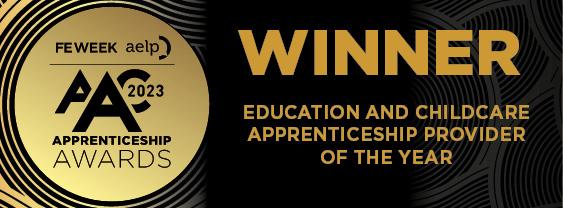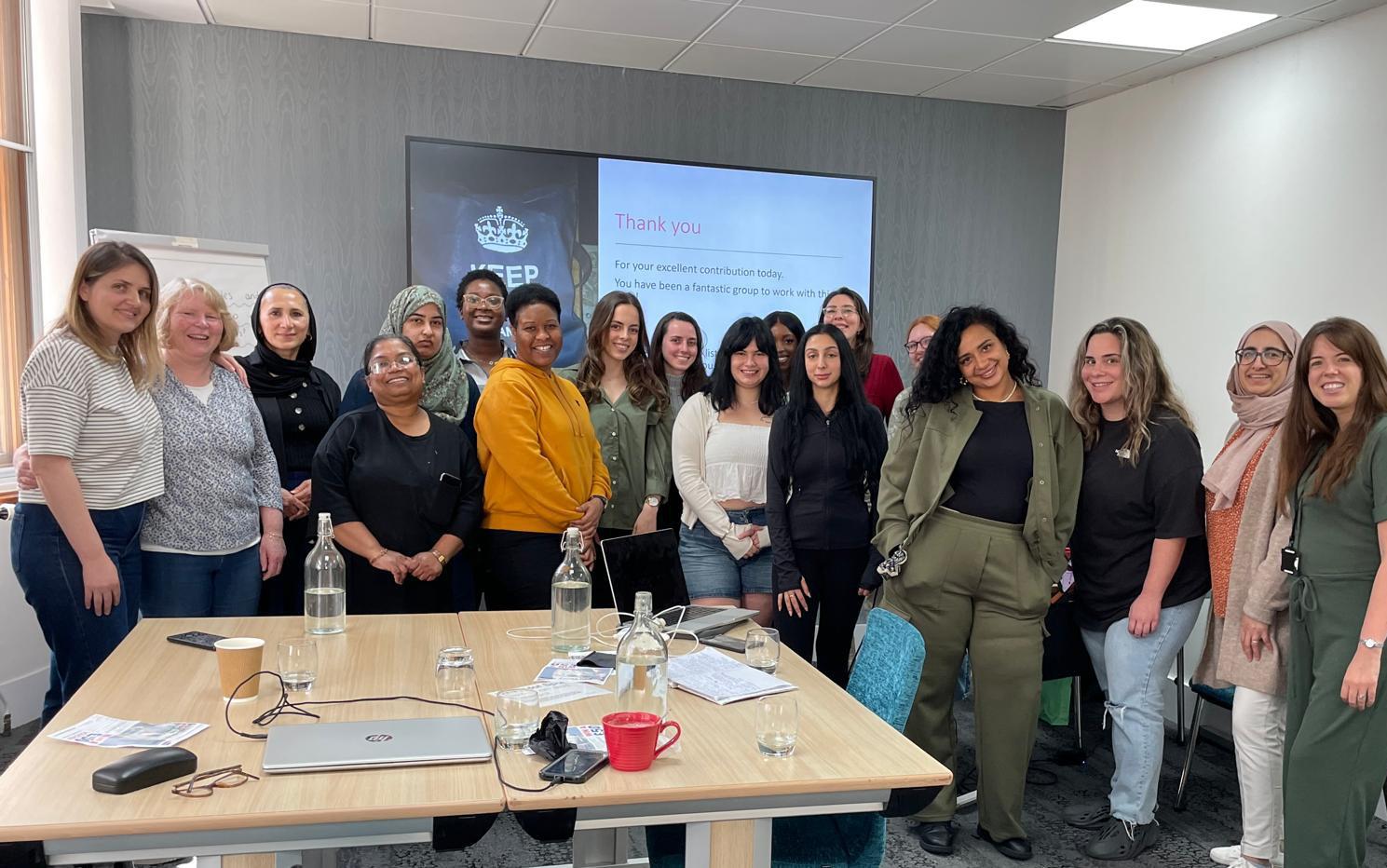

Apprenticeship Levy Guide For Schools & MATs
How apprenticeships and Apprenticeship Levy funding can meet your staffing needs.

bestpracticenet.co.uk/apprenticeships




Introduction to the Apprenticeship Levy
The Apprenticeship Levy, implemented by the UK Government in April 2017, mandates contributions from all employers with a wage bill exceeding £3 million.
While this requirement covers many schools, many are unaware of the extent of their contributions or the procedures for accessing their allocated funds.
Schools affiliated with larger employer entities, such as local authorities or multi-academy trusts (MATs), may potentially access substantial funds.
What are apprenticeships?
Apprenticeships provide an excellent way for schools to either recruit fresh talent or enhance the skills of their current staff.
A diverse range of apprenticeships are available ranging from level 2 (GCSE) to level 6/7 (degree and postgraduate degree level). Apprentices are employed by the school, acquiring on-the-job training that familiarises them with the school environment. Additionally they complete off-the-job training to learn new knowledge, skills and behaviours for their role.
Apprenticeships can be used to develop talent as part of a People and Talent Strategy and also for Continued Professional Development.
Schools and MATs encompass a wide variety of different roles. There are numerous apprenticeships available for training or upskilling staff for these roles.
Various apprenticeship training programmes may be relevant to your staff, including; Teaching Assistants, Unqualified Teachers, Early Years Practitioners, Senior Leaders, Headteacher and Executive Leaders.

“Apprentices enjoy their studies. They find their coursework and job roles challenging and stimulating. They value greatly the care and support they receive from their tutors.”
Ofsted Report, December 2023
Who can apply for an apprenticeship?
In England, most anyone can apply for an apprenticeship if they are 16 or over and not in any other form of education.
Apprenticeships are a great way to gain an industry recognised qualification and develop a rewarding career. They are cost free for the apprentice and provide an opportunity to earn while you learn.
Current staff can also utilise apprenticeships for their CPD, this is a cost-effective solution for schools to promote and train employees.
Who is eligible for an apprenticeship?
To be eligible for an apprenticeship the learner must have:
Support from their employer and Apprenticeship Levy account holder
Be working in the role related to the specific apprenticeship programme, this might be a current employee or a new apprentice starting the role
GCSEs in English and maths at Grade C (4) or above OR able to achieve Level 2 English and maths whilst on programme (for a Level 2 apprenticeship only Level 1 Functional Skills is required)
Held a residency in the UK for the last three years
Understanding the Apprenticeship Levy and how it works
The Apprenticeship Levy is a contribution required from employers with a pay bill exceeding £3 million.
The Apprenticeship Levy is paid into a central Apprenticeship Service account at a rate of 0.5% of the total annual pay bill. Employers manage their levy funds through their account dedicated to apprenticeship training expenditures.

While only larger organisations pay the Apprenticeship Levy, the funds it generates also support apprenticeship training for smaller employers interested in taking on apprentices.
• The Apprenticeship Levy is paid into the apprenticeship service account monthly
• You automatically receive a 10% contribution top-up from the government. Apprenticeship training can only be delivered by an approved training provider
• Apprenticeship Levy funds can only be used to pay for training apprentices to achieve qualifications as part of an approved apprenticeship training programme
• Funds must be used within 24 months, or they expire
“Apprenticeships aren’t just for new staff and young peoplethey can be used to upskill and train existing staff of all ages and at any level.”
Tracy Clement Apprenticeships Director Best Practice Network
How does the Apprenticeship Levy work for your school?
Depending on how your school is managed, the Apprenticeship Levy will be held and accessed differently.
See below for more information and how to access your funds.
Academies and Multi-Academy Trusts
2
3
It is likely you trust will be your employer and they will pay into the Apprenticeship Levy. Get in touch with your trust head office to see how much allocation is available. There may be a centralised apprenticeship strategy in place across the trust.
Voluntary-Aided Schools
If your governing body’s pay bill is over £3 million, they will pay into the Apprenticeship Levy. To access the funds, you’ll need to contact your governing body and see how much allocation is available. Some VA schools can access the levy via their local authority, this will need to be discussed with them directly, however, Best Practice Network can support these discussions.
Community and Voluntary Controlled Schools
Your Local Authority is likely to pay into the Apprenticeship Levy. Your local authority should let you know how much levy you have available to spend. If you’re unsure how to access the funds, contact your local authority to find out.
What if your employer doesn’t pay into the Apprenticeship Levy?
If your employer doesn’t pay into the Apprenticeship Levy, or there are not enough available funds, you can still use apprenticeships at your school with the co-investment option.
The government will pay for 95% of the programme fees while your employer or account holder co-invests the remaining 5%. This 5% is invoiced monthly over the duration of the programme. 1
What are Apprenticeship Levy Transfers?
Alternatively, if you or your school cannot access the Apprenticeship Levy, your apprenticeship training programmes can still be 100% funded by a levy transfer. Apprenticeships can be funded by an Apprenticeship Levy-paying employer transferring up to 50% of their levy to a different employer.
Transferred funds are used to pay for 100% of the training and assessment costs of the apprenticeship up to the funding band maximum.
Transferred funds cover the cost of the whole duration of the apprenticeship.
What to expect from apprenticeships with Best Practice Network
As a leading provider of Early Years, Teaching Assistant and Leadership and Management apprenticeship programmes, we are committed to delivering high-quality education across all our programmes.
Apprentices learn with a mixture of coaching sessions and online classes well as independent study using high-quality teaching resources, such as webinars online documents and an extensive reference library.
Alongside the programme we run additional well-being, careers advice and guidance programme called BPN boost. There are optional monthly webinars on different topics and an online library of resources to support apprentices with their journey.
Best Practice Network is a corporate member of the Association of Apprentices. All apprentices will become members and be able to network with their community, attend events and access further information and resources.


Apprentices are fully supported by expert Apprenticeship Tutors based across England who will visit your school for inperson reviews and observations

We understand the unique challenges and opportunities schools and Multi-Academy Trusts (MATs) face when it comes to effectively utilising the Apprenticeship Levy. Our dedicated team is here to work in partnership with you to create a comprehensive and impactful apprenticeship strategy tailored to your specific needs.
Why Partner with Us?
Expert Guidance: Our experts have extensive experience in the education sector and are well-versed in the intricacies of the Apprenticeship Levy. We provide clear, actionable advice to help you navigate the levy, ensuring you maximize its benefits.
Bespoke Training Programmes: We design customised training programs that align with your school’s or MAT’s objectives. Whether you’re looking to upskill existing staff or recruit new talent, our training solutions are crafted to meet your precise requirements.
Recruitment Services: Finding the right apprentices can be challenging. Our recruitment services are designed to streamline this process, helping you attract and select the best candidates who are eager to contribute to your school’s success.
Strategic Planning: We work closely with your leadership team to develop a strategic plan that integrates apprenticeships into your broader educational goals. This includes identifying key areas where apprenticeships can add value and creating a roadmap to achieve these goals.
For more information on how we can help your school or MAT create and implement a successful apprenticeship strategy, please contact us at partnerships@bestpracticenet.co.uk
Apprenticeship Development Pathways
Early Years
Early Years
Practitoner Level 2
Duration: 12-14 Months
Anyone
Early Years
Educator Level 3
Duration: 15-18 Months
Someone
Support Staff
Teaching
Assistant Level 3
Duration: 15-18 Months Ideal
Early Years Lead Practitioner Level 5
Duration: 18-24 Months
Someone
Postgraduate Teacher Apprenticeship with QTS
Teachers
School Leader Programme with NPQSL
Duration: 18 Months For
Headteacher programme with NPQH
Duration: 18 Months For
Wellbeing
Thrive Wellbeing Specialist Teaching Assistant Apprenticeship Level 5
Duration: 18 Months
Executive Leader Programme with NPQEL
Duration: 18 Months
Headteachers with 3
Thrive Wellbeing Leadership Apprenticeship Level 5
Duration: 14 Months

Hire an Apprentice: Free assisted recruitment service
Best Practice Network has a national pool of aspiring early years professionals, teaching assistants and teachers looking for an employer to support them through their apprenticeship.
Our dedicated recruitment team will arrange a call to better understand your recruitment needs before then:
• Advertising your vacancy
• Screening prospective applicants to assess their eligibility and suitability
• Pairing you with apprentices in your area
• Supporting apprentice enrolment
• Specialist in the education sector
Teaching Assistant Level 3 Apprenticeship
The Level 3 Teaching Assistant (TA) apprenticeship is ideal if you are already working in or looking for a career in a teaching support role.
• Certificated training in up to two chosen specialist areas: SEND, Early Years, Behaviour, EAL and Assessment
• Fantastic well-being programme BPN Boost to support learners throughout the programme
• Potential fast-track to Higher Level Teaching Assistant (HLTA) status
• Apprenticeship Levy-funded, which we can help you access
• Safeguard and promote the health, safety and welfare of children
• Work with teachers to understand and support assessment
Entry requirements
Apprentices must meet the following criteria:
• Be employed as a Teaching Assistant with support from the school
• GCSEs in English and maths at Grade C (4) or above or able to achieve Level 2 English and maths whilst on programme
• Have held a residency in the UK for the last three years
Learn more and apply at bestpracticenet.co.uk/TA For more information call 0117 920 9428 or email enquiries@bestpracticenet.co.uk
“It’s a brilliant, helpful, friendly and
I feel
Teaching Assistant Apprenticeship Level 3 with SEND
The Level 3 Teaching Assistant (TA) Apprenticeship with SEND is tailored for both current TAs and those aspiring to become TAs, focusing on supporting students with Special Educational Needs and Disabilities.
• Gain Teacher Apprenticeship in 15 - 18 months specialising in SEND
• Certificated training in up to two chosen specialist areas: SEND, Early Years, Behaviour, EAL and Assessment
• Fantastic well-being programme BPN Boost to support learners throughout the programme
• Apprenticeship Levy-funded, which we can help you access Entry requirements Apprentices must meet the following criteria:
• Be employed as a Teaching Assistant with support from your school and Apprenticeship levy account holder/Apprenticeship Service Account holder
• Support from your Line Manager/designated Mentor to work with you throughout the programme and support you with the 20% off-the-job training including webinars, portfolio preparation, shadowing, reading and time to attend review meetings. Also to set the plan for the on-the-job training according to an Individual Learning Plan
• GCSEs in English and maths at Grade C (4) or above or able to achieve Level 2 English and maths whilst on programme
• Have experience in the role or similar roles
• Have held a residency in the UK for the last three years

“The course itself works well alongside being a teaching assistant. The subjects in the webinars are very relevant. I am really enjoying the specialist modules; I chose SEND and Early years. I like the way I can learn at my own pace.”
Learn more and apply at bestpracticenet.co.uk/Teaching-Assistant-Apprenticeship-Level-3-SEND For more information call 0117 920 9428 or email teach@bestpracticenet.co.uk

Claire Mackenzie, TA Apprentice, Pink Elephants
Apprenticeship Programmes for Schools available with Best Practice Network
Specialist Teaching Assistant Level 5 Apprenticeship
The Specialist Teaching Assistant Apprenticeship Level 5 is a 18-month long apprenticeship that prepares individuals to support learners across various educational settings, including primary, secondary, special schools, and further education institutions.
• Gain a qualification equivalent to a foundation degree
• One-to-one support with your personal Apprenticeship Tutor
• Fully funded by the Apprenticeship Levy (worth £12,000)
• Gain deep understanding of policies, practices, and procedures to your role
Specialist teaching assistants choose from three main pathways:
• SEND – Supporting learners with special educational needs and disabilities.
• Social and Emotional Well-being – Focusing on mental health and emotional support.
• Curriculum Provision – Specialising in subject-specific interventions such as early reading or maths, forest school, or EAL.
Entry requirements
Apprentices must meet the following criteria:
• 1 year of classroom experience
• Support from the school you are planning on doing the apprenticeship with
• GCSEs in English and maths at Grade C (4) or above or able to achieve Level 2 English and maths whilst on programme
• Have held a residency in the UK for the last three years
AT A GLANCE

“Our new Level 5 Coaching in Education Apprenticeship offers a blend of theory and practice, guided by expert tutors, to develop coaching expertise across all levels of experience. We’re excited to support participants in making a real difference through their coaching. “
Coaching in Education Apprenticeship Level 5
The Coaching in Education Apprenticeship Level 5 offers staff in schools the opportunity to develop as confident, evidence-informed coaches.
The Coaching in Education Apprenticeship Level 5 is designed for professionals across the education sector who are involved in supporting and developing others.
• Gain the ILM Level 5 Certificate in Effective Coaching and Mentoring alongside your apprenticeship, with no extra study or cost
• Master advanced coaching models and techniques
• Enhance emotional intelligence and inclusive practice
• Create better coaching relationships
• Evaluate coaching outcomes using ROI models
“The
Learn more and apply at bestpracticenet.co.uk/STA For more information call 0117 920 9428 or email enquiries@bestpracticenet.co.uk
TA Apprentice
• Learn to manage difficult conversations and ethical dilemmas in a structured way, with a clear understanding of professional boundaries and safeguarding obligations
Entry requirements Applicants must:
• Work in an educational setting
• Have held a residency in the UK for the last three years
• Have the right to work and study in the UK
£5,000 £0 with Apprenticeship Levy funding.
Learn more and apply at bestpracticenet.co.uk/coaching-education-apprenticeship-level-5 For more information call 0117 920 9428 or email npq@bestpracticenet.co.uk

Apprenticeship Programmes for Schools available with Best Practice Network
Nicola Bostock-Hayes, Head of Mentoring

